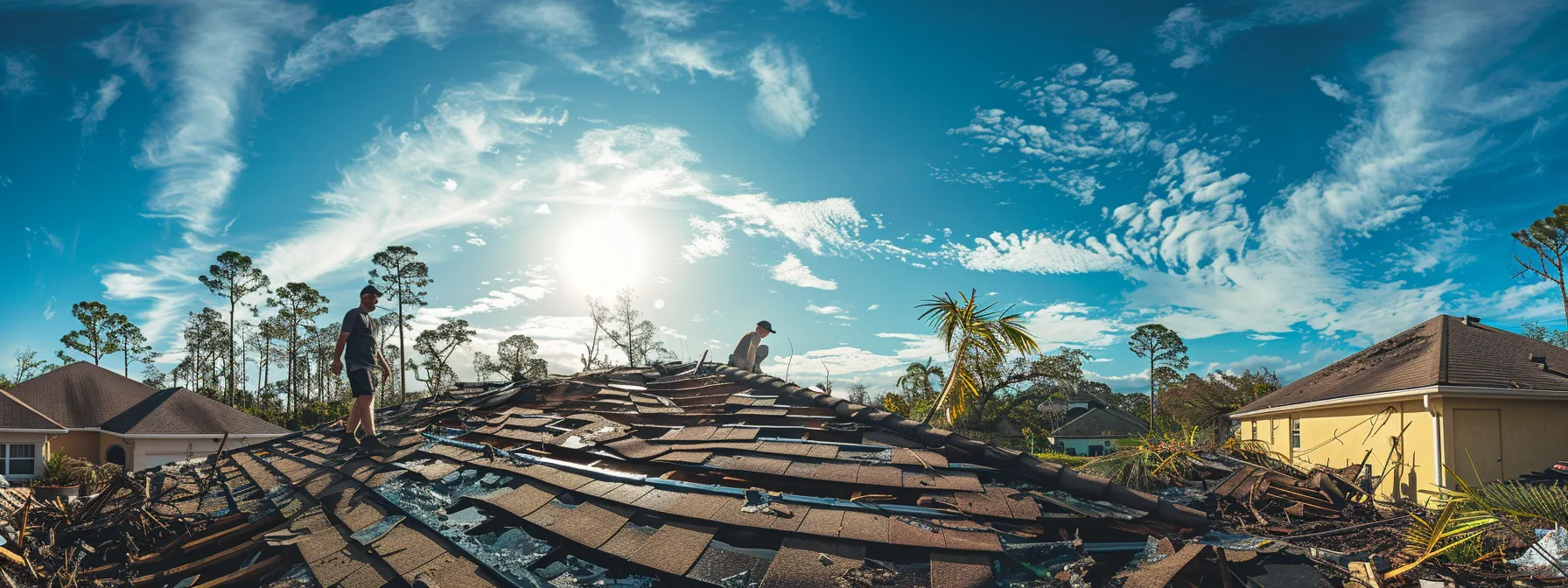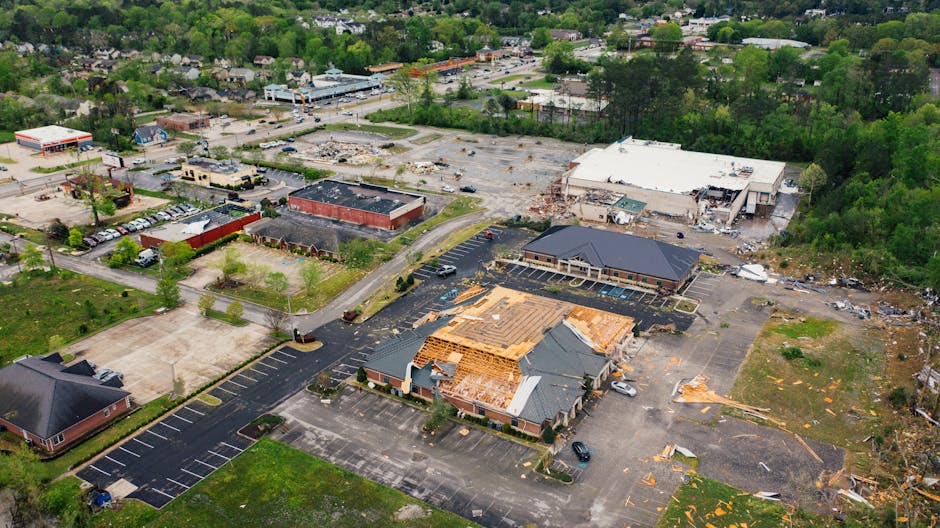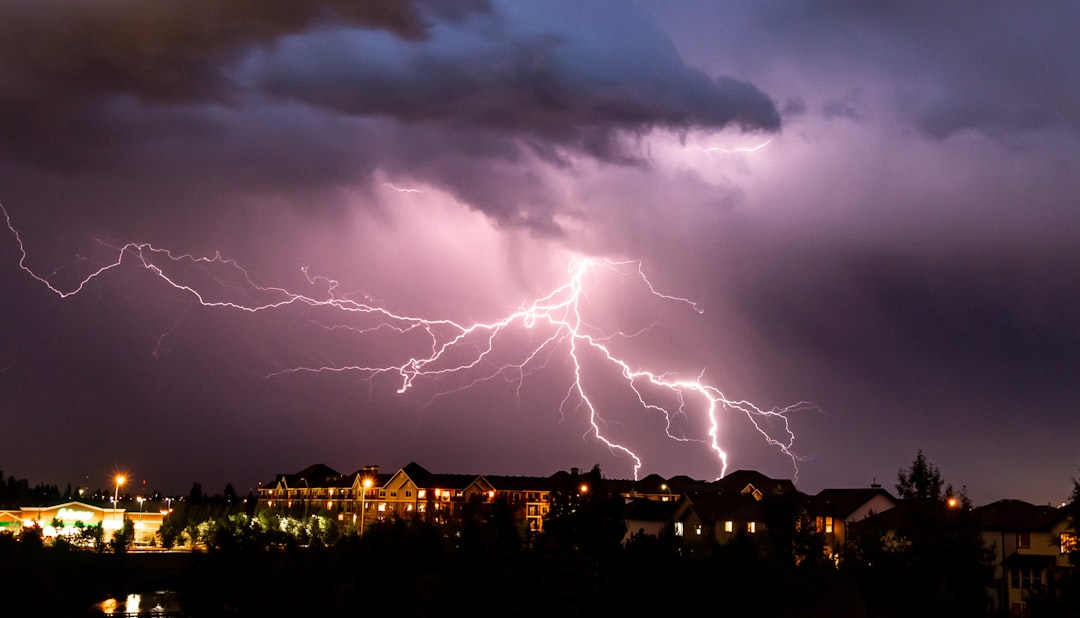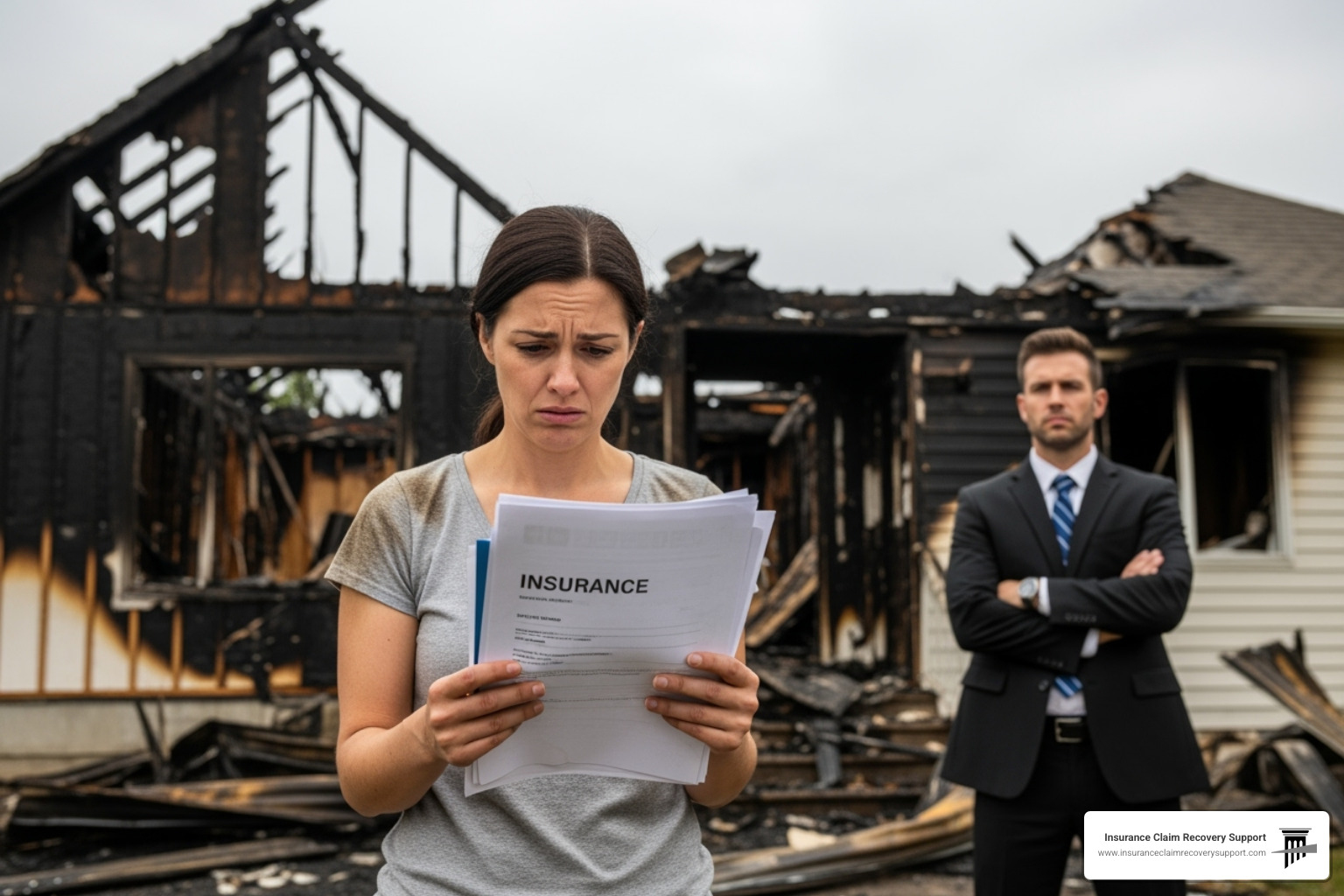Navigating the hurricane insurance claim process can be overwhelming, especially after experiencing devastating damages from storms like Hurricane Milton, Beryl, and Helene. With the potential for wind and flood damage, property owners often face a challenging claims landscape. This guide will cover essential aspects such as understanding your hurricane insurance policy, assessing damage after a hurricane, and filing your insurance claim promptly. By following this comprehensive guide, readers will gain valuable insights to tackle common pain points, like ensuring they receive fair compensation, and know when to seek help from a public adjuster.
Key Takeaways
- understanding hurricane insurance policies is essential for property owners in high-risk areas
- reviewing coverage limits can prevent financial losses during the claims process
- documenting property and assets is crucial for successful insurance claims
- proactive measures enhance preparedness and streamline the insurance claim process
- engaging a public adjuster can help navigate complex insurance claims effectively
Understanding Your Hurricane Insurance Policy

Understanding a hurricane insurance policy is essential for property owners in hurricane-prone areas. Reviewing coverage and limits clarifies what is protected under the policy, while identifying exclusions and endorsements highlights potential gaps. Clarifying deductibles, out-of-pocket costs, and distinguishing between wind and flood damage are crucial in navigating claims. This knowledge empowers policyholders to engage effectively with their claims adjuster during the claims process.
Reviewing Coverage and Limits
Property owners in Texas, Florida, Georgia and the Carolinas must carefully review their hurricane insurance policies to understand the coverage and limits provided. Policies can vary significantly, and it is crucial to know what is protected against events like storm surge, wind damage, and other natural disasters.
When examining coverage limits, policyholders should pay close attention to the maximum amount their insurer will pay for damages caused by a hurricane. This includes understanding how flood coverage is addressed, as many standard property insurance policies do not cover flood damage from heavy rains and rising waters. Knowing these details can prevent financial losses during the claims process and ensure that property owners are sufficiently protected against potential loss.
Additionally, policyholders should be mindful of any exclusions or specific endorsements in their hurricane policies that could affect their claims. For instance, certain policies might have restrictions related to wind or storm surge that could impede recovery in the event of a major storm. By thoroughly reviewing these aspects and confirming coverage with the insurer, property owners can mitigate surprises and better navigate the claims process when disaster strikes.
Identifying Exclusions and Endorsements
Identifying exclusions in a hurricane insurance policy is critical for property owners to understand their coverage limitations. Many policies may not include specific provisions for damage caused by storm surges or flooding unless additional endorsements are purchased. By consulting with an insurance expert, property owners can clarify the implications of these exclusions and ensure that their home insurance adequately protects against potential financial losses.
In addition to reviewing exclusions, property owners should investigate endorsements that can enhance their hurricane coverage. These endorsements may be necessary to secure protection for particular perils not typically covered under standard home insurance policies. Incorporating these endorsements can sometimes involve an additional percentage in premiums, but the investment often proves worthwhile in the aftermath of a hurricane, providing essential support during the claims process.
Understanding the laws governing hurricane insurance in their area is also beneficial for policyholders. The Small Business Administration offers resources that explain these laws and the overall claims process, which can aid in comprehending any limitations in their policies. Equipped with this knowledge, property owners can be well-prepared to engage in discussions with their claims adjusters and ensure they receive the maximum benefits permitted under the law.
Clarifying Deductibles and Out-of-Pocket Costs
Understanding deductibles in a hurricane insurance policy is essential for policyholders. A deductible is the amount a property owner is responsible for paying out-of-pocket before the insurance company covers the remaining expenses related to a disaster. It is important for property owners to review their policy documents to determine the specific deductible amounts for various types of claims, such as those related to water damage from flooding or losses due to wind damage.
Out-of-pocket costs can significantly affect a property owner’s financial situation during the claim process. For example, if a hurricane causes severe property damage, including personal injury to guests or tenants, understanding how to calculate these costs helps policyholders prepare for what they may need to pay upfront. Effective emergency management starts with knowing the potential expenses, allowing property owners to secure additional resources if needed.
In addition, recognizing the impact of deductibles on the overall claim amount can guide property owners in making informed decisions. Certain policies may include varying deductible amounts based on the type of disaster, further complicating the claims process. By understanding these details, property owners can better engage with their insurance claims adjuster and ensure they receive the financial support they need during a trying time:
| Key Terms | Description |
|---|---|
| Deductible | The amount paid out-of-pocket before insurance coverage begins. |
| Water Damage | Damage caused to property due to flooding or water intrusion. |
| Emergency Management | Strategies to prepare for, respond to, and recover from disasters. |
| Disaster | An event causing significant disruption, necessitating emergency assistance. |
| Personal Injury | Injuries sustained by individuals due to unsafe conditions on a property. |
Distinguishing Between Wind and Flood Damage
Distinguishing between wind and flood damage is essential for property owners navigating the hurricane insurance claim process. Many homeowners assume their standard property insurance covers all types of damage, but this is often not the case. Specifically, damages resulting from flooding, such as those seen during Hurricane Katrina, typically require a separate flood insurance policy, making it crucial for policyholders to understand the differences.
Wind damage results from high winds that can cause property destruction, such as roof damage or structural issues. This type of damage is generally covered under standard hurricane insurance policies. Property owners should communicate effectively with their adjusters to ensure that claims for wind damage are processed accurately and promptly.
In contrast, flood damage occurs from the inundation of water during extreme weather events and is often not included in standard policies. Without appropriate flood insurance, property owners may face significant financial burdens, including potential lawsuits for damages to neighboring properties. Knowing these distinctions aids in better preparation and the ability to take proactive steps to address specific insurance needs before a hurricane strikes.
Knowing your hurricane insurance is vital. Now, prepare yourself before the storm arrives, because the time to act is before the winds howl.
Preparing Before the Storm
Property owners, including those with condominiums, must take proactive steps to protect their investments before a hurricane strikes. Documenting property and assets helps ensure proper claims handling, while safeguarding important documents is crucial for navigating insurance law and mediation processes. Creating a home inventory list and implementing preventative measures enhance preparedness and provide valuable support during any claims with the Federal Emergency Management Agency.
Documenting Property and Assets
Documenting property and assets is a vital step for property owners to mitigate risks associated with hurricanes. By conducting a thorough inventory of belongings prior to a storm, individuals can establish proof of ownership and condition, which is essential for filing successful insurance claims. This proactive approach provides peace of mind and empowers policyholders to accurately assess their replacement value in case of damage or loss.
In addition to tangible assets, property owners should also document any injuries sustained by individuals on their premises before, during, or after a storm. Keeping records of medical expenses and incident reports can protect property owners in case of liability claims stemming from injuries. Proper documentation not only reinforces the evidence in insurance disputes but also helps owners avoid potential accusations of fraud during the claims process.
Using photography and video to capture the state of the property before a storm further enriches the documentation process. Visual evidence serves to substantiate claims regarding the property‘s condition and can streamline interactions with insurance adjusters. By ensuring that all details are meticulously recorded, property owners can navigate the claims process more effectively and secure the compensation they deserve after a storm-related incident.
Safeguarding Important Documents
Safeguarding important documents is a crucial step for property owners preparing for a hurricane. Ensuring that insurance policies, including details about hurricane deductibles, are stored securely can expedite the claims process after a disaster strikes. Digital copies in a cloud storage service or a safe physical location can help prevent loss during the storm.
Additionally, property owners should keep records related to their participation in the National Flood Insurance Program, as these documents will be essential when filing claims for flood damage. By having inspection reports and other relevant documentation readily available, policyholders can significantly enhance their chances of a smooth claims experience. This preparedness reduces stress during the recovery phase when time and accuracy are of the essence.
Understanding the potential expenses involved in recovery is vital. Property owners should compile receipts for past repairs or improvements to their property, as these documents can facilitate claims related to damages. By actively managing their documentation, property owners can navigate the complexities of the insurance claim process with greater confidence and efficiency.
Implementing Preventative Measures
Implementing preventative measures is vital for property owners to minimize potential hurricane damage and streamline the insurance claim process. Securing windows and doors with storm shutters or plywood can significantly reduce the risk of impact damage from flying debris. Property owners can also elevate critical equipment, such as HVAC systems, to protect against flooding and water intrusion during severe weather events.
Regular maintenance checks on roofs, gutters, and drainage systems can play a crucial role in storm preparedness. Removing debris and ensuring proper drainage can prevent water accumulation, reducing the risk of water damage during a hurricane. For additional guidance, property owners can seek Claim Help through online resources or informative YouTube videos that demonstrate effective preventative measures for their property.
Beyond physical preparations, property owners should develop an emergency plan that outlines steps to take when a hurricane approaches. This plan should include evacuation routes, emergency contacts, and procedures for securing the property. Being proactive in these preparations not only safeguards the property but also positions homeowners to engage more effectively with their insurance adjuster during the claims process.
The winds had come and gone, leaving silence in their wake. Now, amid the debris, it was time to evaluate what the storm had taken and what could still be saved.
Assessing Damage After the Hurricane
After a hurricane, property owners must prioritize safety before inspecting their property. This includes assessing damage by photographing and recording affected areas, as well as making temporary repairs to prevent further issues. Keeping receipts and expense records during this process is crucial for a smooth insurance claim. Each of these steps provides a foundation for a successful recovery and claim submission.
Ensuring Safety Before Inspection
Before inspecting a property after a hurricane, safety is the primary concern for all property owners. It is imperative to assess the environment for hazards such as downed power lines, unstable structures, and flooding. Understanding these risks helps individuals approach the inspection process with caution and ensures their well-being during what could be a precarious situation.
Property owners should avoid entering buildings that show signs of severe damage, such as crackling walls or sagging roofs. If there is a possibility of gas leaks, they must ventilate their homes properly by opening windows while staying clear of any possible ignition sources. Adopting these safety measures allows assessors to minimize injury risks and focus on gathering the necessary information for insurance claims.
Additionally, documenting the extent of damages should begin only after ensuring the area is safe. Property owners can use their mobile devices or cameras to capture the situation without putting themselves at risk. Maintaining a safe approach to property inspection not only protects individuals but also facilitates a more efficient claims process by ensuring that accurate and comprehensive information is collected for the insurance claim submission.
Photographing and Recording Damage
Photographing and recording damage after a hurricane is crucial for property owners looking to submit effective insurance claims. Accurate documentation provides visual evidence of the extent of damage, which is essential for the claims process. Property owners should take clear and detailed photographs, focusing on damaged areas as well as structural weaknesses that may not be immediately visible.
In addition to photography, keeping a written record of the damage is vital. This includes noting the date and time of the inspection, as well as descriptions of the affected areas. By combining photos with written details, property owners can create a comprehensive report that enhances the credibility of their claims.
Taking the time to organize and label these photos and records can prevent confusion later in the claims process. For instance, creating a chronological log of the damage, including temporary repairs made, ensures that all necessary information is available for review by the insurance adjuster. This meticulous approach can streamline the settlement process and ultimately lead to a more favorable outcome for the property owner:
- Capture clear photos of all damaged areas.
- Document the condition of the property with written notes.
- Organize and label photographs and records for easy reference.
Making Temporary Repairs to Prevent Further Issues
Making temporary repairs after a hurricane can significantly reduce the risk of further damage to a property. For example, covering broken windows and roofs with tarps can prevent rain from entering and causing additional issues, such as mold growth or structural compromise. Property owners should act swiftly to mitigate damage while ensuring safety during the repair process.
Property owners often face the challenge of balancing immediate repairs with insurance claims. Documenting any temporary repairs with photographs and receipts can provide essential evidence for the insurance claim later. This documentation ensures that the necessary expenses are recorded to support potential reimbursement from the insurance company.
Effective communication is key when dealing with temporary repairs and the insurance adjuster. Property owners should keep an organized record of all repairs made, including dates, materials used, and costs incurred. This proactive approach not only supports a smoother claims process but also helps instill confidence that property owners are taking all necessary steps to protect their investment:
| Action | Purpose |
|---|---|
| Cover Broken Windows | Prevent water intrusion and further interior damage |
| Document Repairs | Provide evidence for insurance claims |
| Communicate with Insurance Adjuster | Ensure all repairs align with the claims process |
Keeping Receipts and Expense Records
Keeping receipts and expense records is essential for property owners navigating the hurricane insurance claim process. Each receipt serves as proof of expenditures incurred during the recovery phase, ranging from temporary repairs to supplies necessary for safeguarding the property. Documenting these expenses accurately can fortify a claim and simplify the reimbursement process, ensuring that policyholders receive the financial support they need in a timely manner.
Property owners should meticulously track all costs, including those associated with necessary repairs and replacement of damaged items. This organized approach to recordkeeping not only aids in submitting a thorough insurance claim but also prepares property owners for potential inquiries from insurance adjusters who will review the documentation. By maintaining clear and accessible records, individuals can bolster their cases and minimize disputes during the claims process.
In situations where expenses significantly mount, having well-documented receipts and expense records can provide crucial leverage in discussions with adjusters. It becomes easier to justify claims and can lead to a more favorable settlement outcome. For best results, property owners are encouraged to create a dedicated folder—whether physical or digital—for storing all relevant receipts and records post-hurricane, contributing to a more streamlined recovery and claims process.
The damage was clear, and the need to act fast pressed upon everyone. Filing your insurance claim promptly could mean the difference between recovery and ongoing struggle.
Filing Your Insurance Claim Promptly
Filing an insurance claim promptly is crucial for property owners affected by a hurricane. This section outlines key steps, starting with contacting the insurance provider immediately. It emphasizes the importance of providing detailed information and documentation, understanding the various claims process steps, and communicating effectively with adjusters. Each of these elements plays a vital role in ensuring a smooth claims experience and maximizes recovery potential.
Contacting Your Insurance Provider Immediately
Contacting the insurance provider immediately following a hurricane is critical for property owners. Prompt communication ensures that claims are filed in a timely manner, which can significantly affect recovery amount and speed. Delaying this process may result in complications or reduced coverage, as many policies have specific windows for filing claims after a loss.
When initiating contact, policyholders should prepare to provide detailed information about the incident, including damage assessments and any immediate repairs made. This allows the insurance provider to start the claims process effectively. By having organized documentation, such as photographs and receipts, property owners can support their claims with credible evidence that enhances their chances of a favorable outcome.
Effective communication with the insurance provider also involves understanding the specific claims process outlined in the policy. Property owners should inquire about required documentation, timelines, and claim adjuster assignments. Knowing what to expect helps manage expectations and keeps property owners proactive in navigating the insurance claim process:
| Action | Description |
|---|---|
| Contact Insurance Provider | Initiate claims process promptly to secure coverage. |
| Gather Documentation | Compile evidence like photos and repair receipts. |
| Ask Questions | Clarify the claims process and required information. |
Providing Detailed Information and Documentation
Providing detailed information and documentation is critical for property owners when filing hurricane insurance claims. This process begins with a thorough assessment of the damage, documenting everything from structural issues to personal property loss. Taking detailed photographs and keeping written records creates a solid foundation that supports a clear narrative of the incident, which is essential for a successful claims experience.
When compiling documentation, property owners should include all relevant details, such as the time and date of the incident, weather conditions at the time, and a list of items that were damaged or lost. Keeping receipts for repairs and any emergency measures taken also adds weight to the claim. By organizing this information effectively, property owners can ensure that their insurance adjuster has everything necessary to expedite the claims review process.
Moreover, understanding the specific requirements of the insurance provider regarding documentation can lead to a smoother claims experience. Each insurance company may have different policies on what qualifies as adequate documentation. By staying informed, property owners can proactively gather the necessary paperwork, minimizing any potential delays in claims processing:
- Assess the damage and document all affected areas.
- Gather photographs and written records for clarity.
- Compile receipts for immediate repairs and losses.
- Inquire about the specific documentation requirements from the insurance provider.
Understanding the Claims Process Steps
Understanding the claims process steps is vital for property owners seeking to navigate the complexities of hurricane insurance claims effectively. Initially, policyholders must report their damages to the insurance provider as soon as possible, ensuring timely communication. This first step sets the foundation for the claims process and helps prevent potential complications that could arise from delays.
Following the initial contact, property owners will typically receive instructions regarding required documentation and assessments needed for their claims. This stage involves compiling evidence of damages, including photographs and detailed descriptions. By being thorough in documenting their property damage, policyholders can present a compelling case that reinforces the legitimacy of their claims, ultimately facilitating a smoother claims review process.
Lastly, understanding the timeline associated with the claims process is crucial. Each insurance company has its protocols, including deadlines for gathering information and receiving responses from claims adjusters. By familiarizing themselves with these timelines, property owners can manage their expectations and remain proactive throughout the claim submission, leading to more effective communication and a higher likelihood of a successful recovery.
Communicating Effectively With Adjusters
Effective communication with insurance adjusters is essential for property owners navigating the hurricane insurance claim process. Clear and concise dialogue helps ensure that all necessary information is conveyed, reducing the likelihood of misunderstandings. When discussing claim specifics, property owners should be prepared to articulate details about the damage observed and any immediate measures taken to mitigate further issues.
Property owners can enhance their interaction with adjusters by maintaining organized documentation of their claims process. This includes having readily available photographs, written records of damages, and receipts for any repairs initiated. By presenting well-organized evidence, policyholders can foster a more productive exchange and aid adjusters in efficiently processing the claim, ultimately leading to quicker resolutions.
Practicing patience and professionalism during discussions with adjusters can also facilitate smoother communication. Recognizing that adjusters often manage multiple claims simultaneously encourages property owners to remain courteous while advocating for their interests. This approach not only strengthens the working relationship but also underscores the policyholder’s commitment to a fair and comprehensive assessment of their claims.
Filing a claim is just the beginning. Many face hurdles along the way, so it is important to understand those challenges to protect your interests.
Addressing Common Challenges in the Claims Process
Navigating the hurricane insurance claims process often presents several challenges for property owners. This section covers key issues such as dealing with claim denials or delays, understanding depreciation and actual cash value, and negotiating settlement offers. Furthermore, it highlights when to seek professional assistance to enhance recovery outcomes. Each topic provides practical insights to empower policyholders in their claims journey.
Dealing With Claim Denials or Delays
Dealing with claim denials or delays can be a frustrating experience for property owners after a hurricane. When an insurance claim is denied, it is often due to misunderstandings regarding policy coverage or missing documentation. Policyholders are encouraged to carefully review their insurance policies and understand the specific terms, ensuring they know the basis for their claim to successfully challenge any denials.
Furthermore, delays in the claims process can occur for several reasons, including high claim volumes during hurricane season. Property owners should maintain regular communication with their insurance adjusters, providing any requested documentation promptly to avoid unnecessary holdups. Keeping a detailed record of all interactions can also help in tracking the progress of the claim and in addressing any issues that arise in a timely manner.
For those facing significant challenges with denials or delays, seeking assistance from a professional public adjuster can be an effective solution. These experts help policyholders navigate complex insurance claims and negotiate with insurance companies to ensure fair compensation. By advocating for their clients, public adjusters can alleviate some of the stress associated with the claims process, enabling property owners to focus on recovery and rebuilding after a disaster.
Negotiating Settlement Offers
When negotiating settlement offers with insurance companies, property owners should be prepared with a comprehensive understanding of their policy and the extent of damages incurred. It is essential to thoroughly document all damages and related expenses, as this information serves as strong evidence that supports the claim. Clear communication plays a critical role in negotiations, allowing property owners to present their case confidently and assertively.
Understanding the actual cash value (ACV) and replacement cost can also empower property owners during negotiations. These financial figures determine compensation amounts and need to be articulated clearly to the insurance adjuster. By preparing an itemized list of damages, along with corresponding repair estimates, policyholders can effectively advocate for a settlement that accurately reflects their losses and facilitates a swift recovery process.
If negotiations reach an impasse, seeking the assistance of a public adjuster can prove beneficial. These professionals have experience in negotiating settlement offers and are well-versed in the nuances of the insurance claims process. Their expertise can help alleviate pressure from owners and ensure that they receive compensation that aligns with the true value of their claim.
Understanding Depreciation and Actual Cash Value
Understanding depreciation and actual cash value (ACV) is vital for property owners filing hurricane insurance claims. Depreciation refers to the decrease in an asset’s value over time, which affects the compensation received for damaged items. For example, a five-year-old roof may have a lower value than its replacement cost based on its age and wear, impacting the claim’s outcome significantly.
Actual cash value is typically calculated by taking the replacement cost of an item and subtracting depreciation. This calculation can lead to properties receiving less in compensation than owners expect, especially if they are not prepared. Property owners must be aware of how their insurance policy defines ACV, as this can greatly affect their overall recovery after a hurricane event.
To navigate this challenge effectively, policyholders should keep detailed records of their property’s condition and improvements over time. This documentation can support claims for full replacement costs rather than ACV, which may be lower. By understanding depreciation and ACV, property owners can reduce surprises during the claims process and advocate more effectively for their rightful compensation:
- Recognize the role of depreciation in insurance claims.
- Know how actual cash value is calculated.
- Maintain thorough documentation of property conditions.
- Advocate for full replacement costs when possible.
Knowing When to Seek Professional Assistance
Property owners often encounter complex obstacles during the hurricane insurance claims process, and knowing when to seek professional assistance can make a significant difference. If a claim faces persistent delays or denials, engaging a public adjuster can help clarify policyholder rights and facilitate effective communication with the insurer. Professionals in this field understand the nuances of insurance policies and can advocate for a fair assessment of the damages.
An experienced public adjuster can also guide property owners through the intricacies of documenting damages accurately. When homeowners feel overwhelmed or unsure about what evidence is necessary for their claims, professionals can provide actionable insights to streamline the process. This includes advising on the best practices for collecting evidence and maintaining organized documentation, ensuring that policyholders put their best foot forward in the claims process.
Ultimately, recognizing when to enlist the help of a public adjuster can save significant time and stress. For property owners unsure of how to present their claims effectively, professional assistance can enhance recovery outcomes and maximize insurance benefits. By leveraging expertise in negotiations and claims management, stakeholders can navigate the challenges of hurricane damage claims with more confidence and less anxiety:
| Scenario | Action |
|---|---|
| Claim denial | Engage a public adjuster to review policy and challenge denial. |
| Frequent claim delays | Seek professional help to streamline communication with the insurer. |
| Confusion with documentation | Hire an expert to guide proper documentation practices. |
The challenges of the claims process have been faced and resolved. Now, it is time to look ahead and understand what comes next after achieving a settlement.
Moving Forward After Settlement
After receiving an insurance settlement, property owners must prioritize planning repairs and restoration to ensure their properties return to pre-storm conditions. Selecting reliable contractors is essential for quality work. Moreover, preparing for future hurricanes involves implementing preventative measures and reviewing and updating insurance coverage to match current needs. Each of these steps contributes to effective post-settlement recovery.
Planning Repairs and Restoration
After receiving an insurance settlement, property owners must focus on planning repairs and restoration to restore their properties efficiently. It is crucial to assess the full extent of the damage under the guidance of qualified professionals. This initial evaluation helps in determining the scope of work required and can assist in prioritizing necessary repairs.
Selecting reliable contractors is essential to ensure quality work throughout the restoration process. Property owners should conduct thorough research, looking for licensed and insured professionals with experience in hurricane recovery. Consulting references, checking online reviews, and obtaining multiple cost estimates are practical steps to find trustworthy contractors who can efficiently complete the repairs.
Implementing a comprehensive project timeline can enhance the organization of all restoration efforts. By breaking down the process into manageable phases, property owners can monitor progress and address any complications that arise. This structured approach not only aids in communication with contractors but also sets clear expectations regarding completion dates and budgetary considerations:
- Conduct a thorough damage assessment.
- Select reliable, licensed contractors.
- Create a detailed project timeline.
Selecting Reliable Contractors
Selecting reliable contractors is a critical step for property owners moving forward after receiving an insurance settlement for hurricane damage. It is essential to thoroughly research potential contractors, focusing on their qualifications, licenses, and insurance coverage. Engaging professionals with proven experience in hurricane recovery ensures that repairs meet industry standards and adhere to local building codes.
Property owners should seek recommendations from trusted sources, such as neighbors or local building associations, and consider checking online reviews for additional insights. Engaging multiple contractors for estimates allows property owners to compare not only costs but also the scope of work proposed. This approach enhances the selection process, ensuring homeowners choose contractors who understand their specific needs and are equipped to deliver quality results.
Establishing clear communication with chosen contractors is vital for a smooth restoration process. Homeowners should discuss timelines, payment schedules, and expectations upfront, ensuring all parties are aligned on project goals. By prioritizing these factors, property owners can build a collaborative relationship with their contractors, which is essential for achieving successful outcomes in the restoration of their properties after a hurricane.
Preparing for Future Hurricanes
Preparing for future hurricanes involves taking proactive measures to protect properties and mitigate potential damage. Property owners should review and update their hurricane insurance policies to ensure adequate coverage for specific risks, such as wind and flood damages. This regular evaluation allows property owners to align their insurance protection with current property values and needs, minimizing risks during future storm events.
Implementing necessary home improvements is another critical aspect of preparation. Reinforcing roofs, installing storm shutters, and elevating important equipment can significantly reduce the risk of severe damage during a hurricane. By focusing on these preventative measures, property owners enhance their resilience against storms and improve their overall safety.
Additionally, creating a comprehensive emergency plan is essential for maintaining safety during hurricane seasons. This plan should outline evacuation routes, safe locations, and communication methods for family members. Being well-prepared doesn’t just protect properties—it also ensures that residents have the resources they need to respond effectively in the face of future hurricanes:
- Review and update hurricane insurance policies.
- Implement necessary home improvements.
- Create a comprehensive emergency plan.
Reviewing and Updating Your Insurance Coverage
After navigating the insurance claim process, property owners should prioritize reviewing and updating their hurricane insurance coverage. This step ensures that their policy reflects the current value of their property and any improvements made since the last assessment. Regular policy reviews empower owners to recognize gaps in coverage, such as protection against wind and flood damage, which are crucial in hurricane-prone areas.
Additionally, it’s important for property owners to reassess their deductible options and limits within their policies. Understanding the impacts of different deductible amounts can help in budgeting for future claims. For instance, opting for a lower deductible may result in higher premiums, but it could be beneficial if a major storm causes significant damage, making the overall claim process more efficient.
Engaging with an insurance agent can provide valuable insights into the specific risks faced by properties in hurricane zones. Property owners should inquire about endorsements that may enhance their coverage, providing additional financial protection. A proactive approach to policy management ultimately strengthens a property owner’s resilience against future hurricane events and ensures they are adequately protected when disaster strikes:
| Step | Description |
|---|---|
| Review Coverage | Ensure policy matches current property value and improvements. |
| Assess Deductibles | Evaluate deductible options and how they affect premiums and claims. |
| Consult Insurance Agent | Discuss possible endorsements to enhance coverage. |






